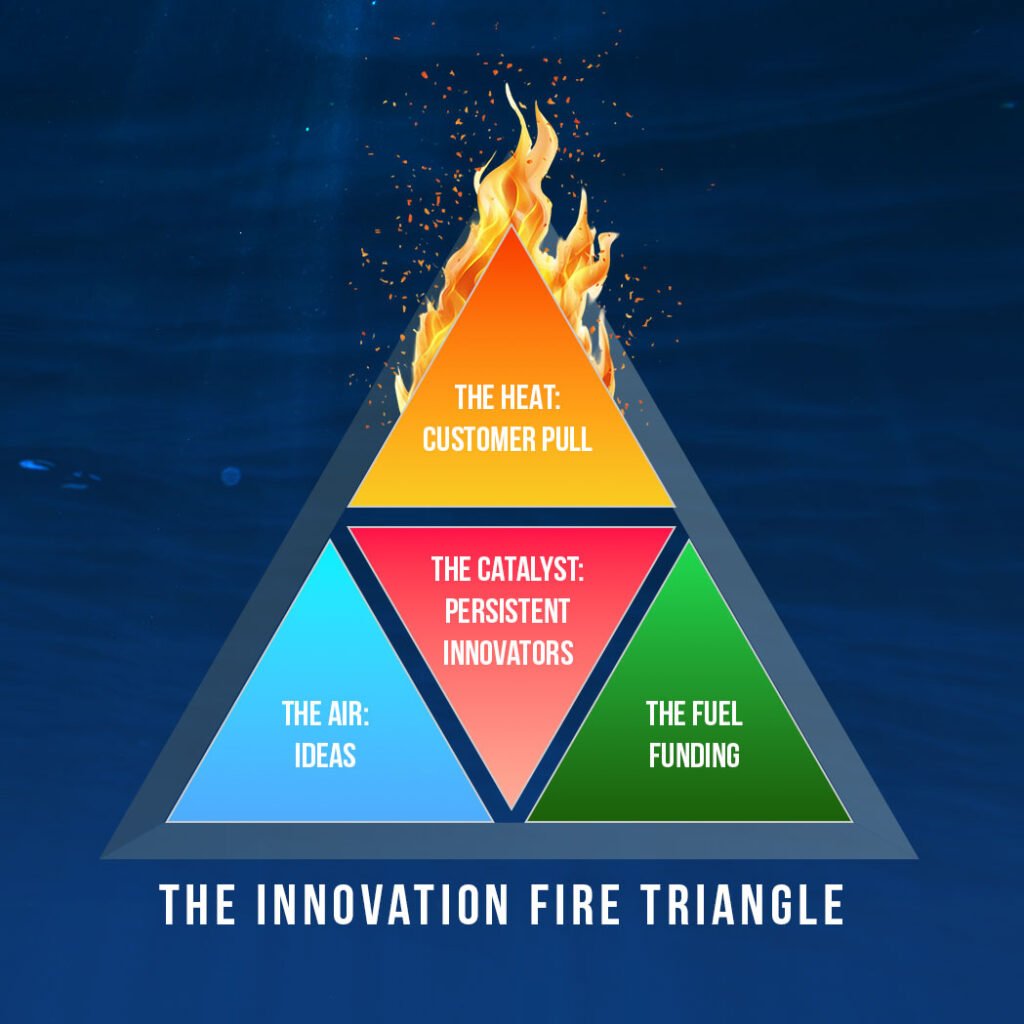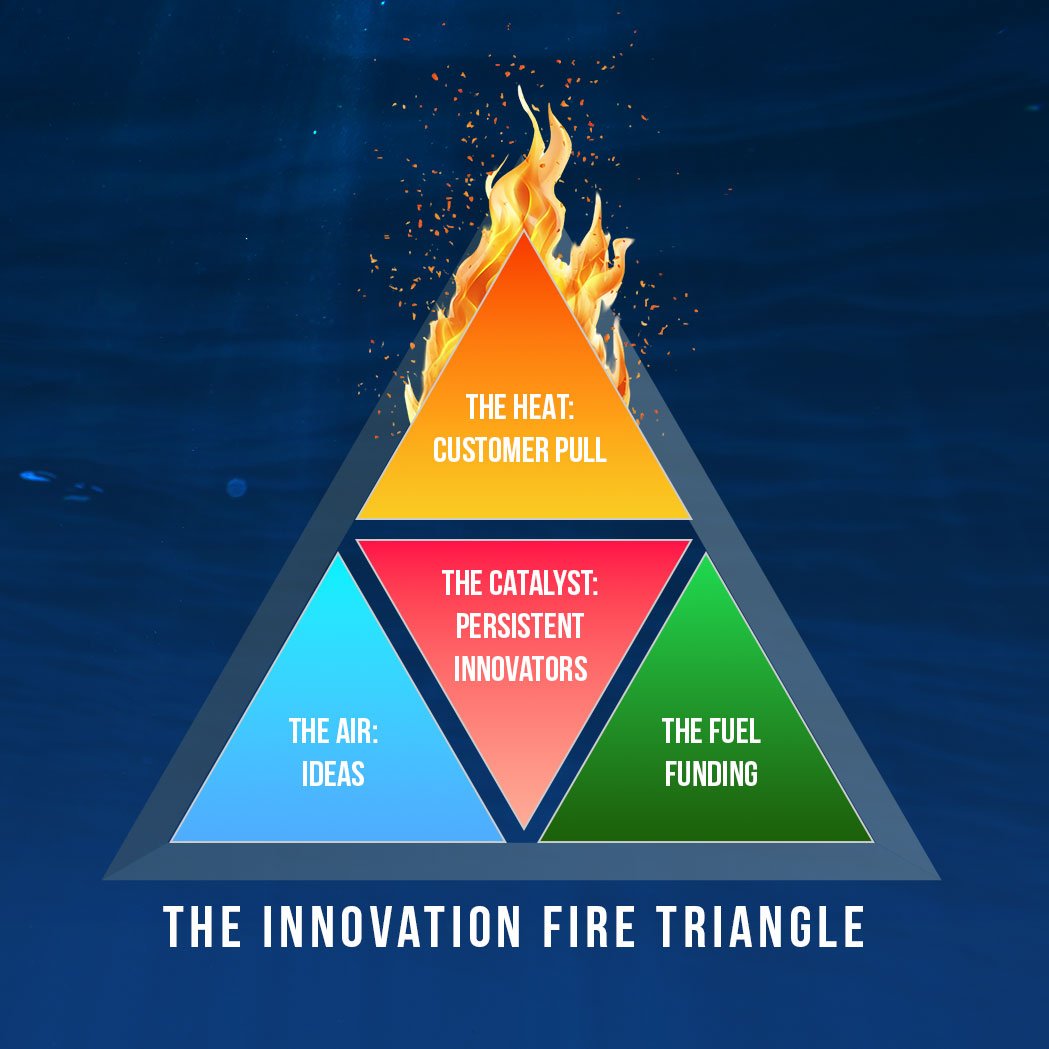
Innovation doesn’t typically happen by accident. It’s a chain reaction, and like fire, it requires three essential elements: ideas, funding, and customers.
At INOV8R, we call this the Fire Triangle of Innovation. Remove any one corner and the innovation fails to ignite.
An idea without a customer is an academic exercise. A customer without funding results in stalled progress. Funding without a validated idea burns cash, not results.
At the center of this triangle stands the Innovator. The one who sees connections where others see chaos. The person who not only imagines the future, but assembles the fuel to build it.
Dive into how entrepreneurs, scientists, and storytellers can apply the Fire Triangle to any venture—from clean energy startups to fiction publishing. We explore how to pitch, test, and iterate within real-world constraints. Because bold ideas require ignition.



